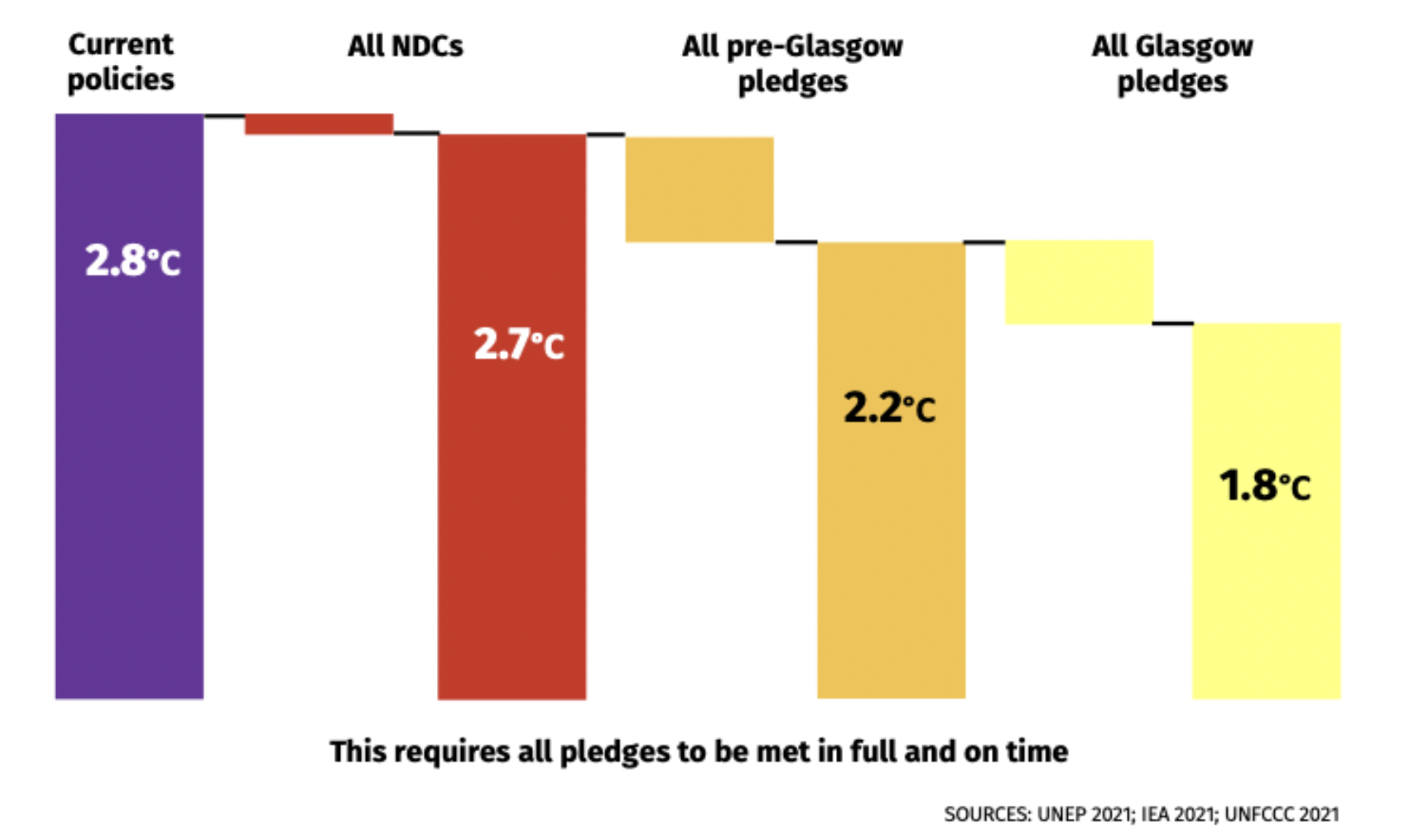When the IEA’s provocateur-in-chief Fatih Birol stood up yesterday and announced to the world that as a result of pledges made at COP, we’re now heading for 1.8°C of warming, many onlookers were left somewhat perplexed. ‘Have we really jumped from 2.7°C warming just a few weeks ago to 1.8°C now?’ ‘Are we really so tantalisingly close to the Paris goal of 1.5°C?’ ‘Have we really almost cracked it?!’
Let’s just take a step back to see where we’re really at.
Before Glasgow, we were nowhere near on track to achieve the Paris targets. Pre-Glasgow national climate plans (NDCs) would see the world warm by about 2.7°C this century. Add in all pre-Glasgow net-zero pledges and we get to 2.2°C says UNEP, or 2.1°C according to the IEA.
It will have calculated the 1.8°C by simply subtracting the new emissions reduction pledges from its 2.1°C estimate. But we know full well that there’s a big gap between what countries pledge and the action they take on the ground. We know that, collectively, countries are falling short on meeting their NDCs and net-zero pledges – under current actual policies we’re looking at warming of around 2.8°C.
| Making sense of the temperature estimates bonanza | |
| 2.8°C | Warming we are set to achieve with current policies. |
| 2.7°C | Warming we are set to achieve if all pre-Glasgow NDCs are implemented on time. |
| 2.2°C/2.1°C | Warming we are set to achieve if all pre-Glasgow NDCs and net-zero pledges are implemented on time. |
| 1.8°C | Warming we are set to achieve if all new pledges announced in Glasgow (as well as before) are implemented on time, according to the IEA’s new estimate, including methane and net-zero pledges. |

The scale of the task at hand suggests that fulfilling the pledges announced at COP will be a monumental task. The energy sector is a good example. According to the IEA itself, as of October 2021 we were only on track to cut energy-related emissions by 40% by 2050, far off what is needed to achieve global net zero. In other words, the current policy frameworks to implement current pledges remain completely insufficient. Equally, solar and wind deployment rates need to quadruple and investment in clean energy technologies needs to triple to deliver net-zero, again according to the IEA. Indeed only two out of the 46 key technologies and sectors necessary for the energy transition are on track, says the IEA. Meanwhile, 870 GW of inefficient coal plants will need to go in the next decade. This equates to retiring two coal plants a day between now and 2030. The coal industry is fading fast, but not that fast.
There are also serious questions about whether the amounts of money needed to hit net zero on time will be available. Finance flows are currently nowhere near what is needed to stay Paris aligned. Clean energy finance stands at around USD 750 billion today – five times lower than what is needed. Government commitment to the energy transition has also been insufficient in Covid recovery plans – as of April 2021, only 17% of government spending contributed to a green recovery. Promises to build back more sustainably remain just that.
So despite the raised ambition demonstrated by the pledges announced this week, 1.8°C is by no means nailed on. To think otherwise could lead to complacency, delays and inaction, all of which could be extremely damaging. For example, today, average annual emission cuts needed to stay below 1.5°C are four times greater than they would have been if collective mitigation started in 2010, according to UNEP. Many pledges already delay action beyond 2030 – further delays could be disastrous. Pledges are important, but they mean nothing if not backed by forceful action.





